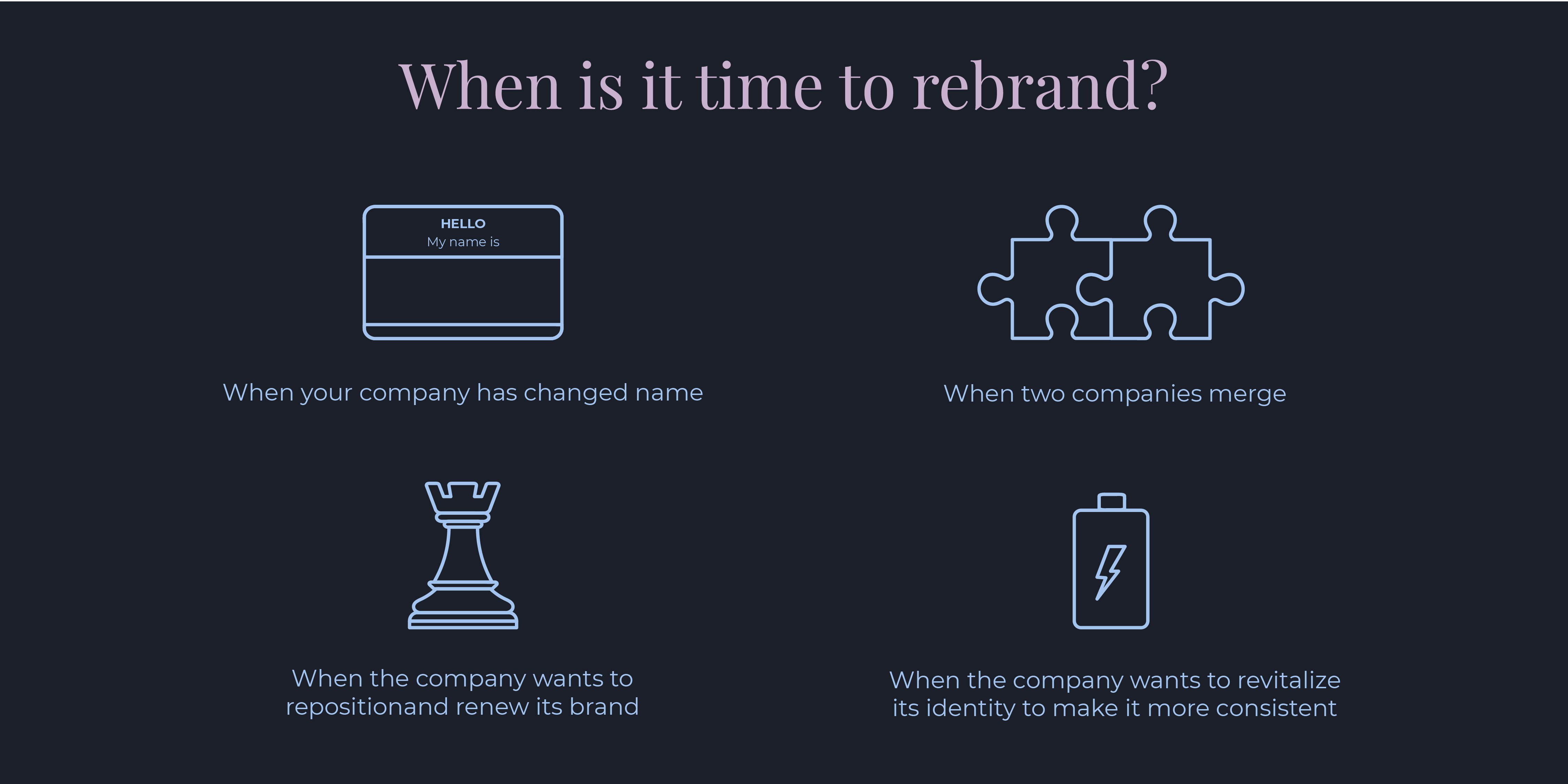Society’s visual tastes and styles never stop changing, and customer expectations and market sentiments change every few months. So businesses can’t stick to the same old image when it becomes irrelevant. Companies can decide to rebrand for numerous reasons. For example, if you think that your company’s mission, values, and vision are no longer reflected by the current brand, a rebrand might be a good decision.

Rebranding is an essential milestone in a brand’s journey and one that should not be taken lightly. With rebranding, a business can reach new clients and bigger opportunities, as well as differentiating themselves from their competition.
Check out out top 5 tips on how to successfully rebrand a business:
Start with your why:
Before jumping into a rebrand, it’s important that you’re clear on your purpose. Rebrands can be tough so it’s important to know what you want to accomplish. Whatever the reason is, make sure your team is clear on what you’re hoping to achieve to keep you all on track for a successful rebrand. Understanding your ‘why’ helps to create a narrative around the rebrand decision. the thinking behind the identity, and what it means for the future of the business. This narrative creates a brand story which helps your audience relate to your brand on an emotional level.
Plan the implementation early in process:
As with most things in life, there is no substitution for preparation. Review all the places your identity lives, audit your marketing activity and then list all the online and offline visual touch points that will need updating. You need to ensure consistency across all of your new brand elements, such as logo, colours, and tagline. These elements are often outlined in a brand guidelines document. Your brand guidelines are a key tool to ensure brand consistency. Without clear guidelines, brand can distort over time and potentially damage your brand value and reputation.
Once all of your touch points are listed ensure the relevant people in your company are tasked with updating the communications once the new brand goes live.
Test the rebrand strategy and involve current customers:
It’s wise to get feedback before making final decisions on the look, tone, and messaging of your rebrand. Make sure to involve past and present customers. Ask them about what works and doesn’t, the answers can help inform how to move forward. Transparency is more and more important to customers, so the more you let them in, the smoother the process will be. Customers expect your brand to be consistent and falling short of this expectation can lead to confusion and frustration.
Launch your rebrand internally first:
Many companies spend a great deal of time planning the external launch, but it’s important not to forget your internal stakeholders too. An internal launch, also known as the ‘soft launch’ is a way to get everybody on board and bring the team into the story so they can effectively represent the brand. Also a way to iron out any kinks before going public. It’s important that employees feel like they are part of your company’s new vision, so they feel valued and excitement towards the new brand.
Build brand recognition and awareness post-launch:
Creating buzz for your new brand is critical post-launch. With memorable, meaningful swag you can help build attention and make a strong first impression. You’ve just launched your new brand to the world, so now it’s time to make sure everyone knows about it! The best way to do that is to put it on everyday, usable swag items. Essentially, putting your brand in the hands of your most important audiences. Send a swag pack to your employees and clients to let them know all about your makeover. Check out our sister company Swag Hut for all of your promotional merchandise needs.
We can help! Enjoy transparent hourly billing and access to top-tier creative marketing experts with one of our monthly subscriptions with our Growth Marketing Subscription.


